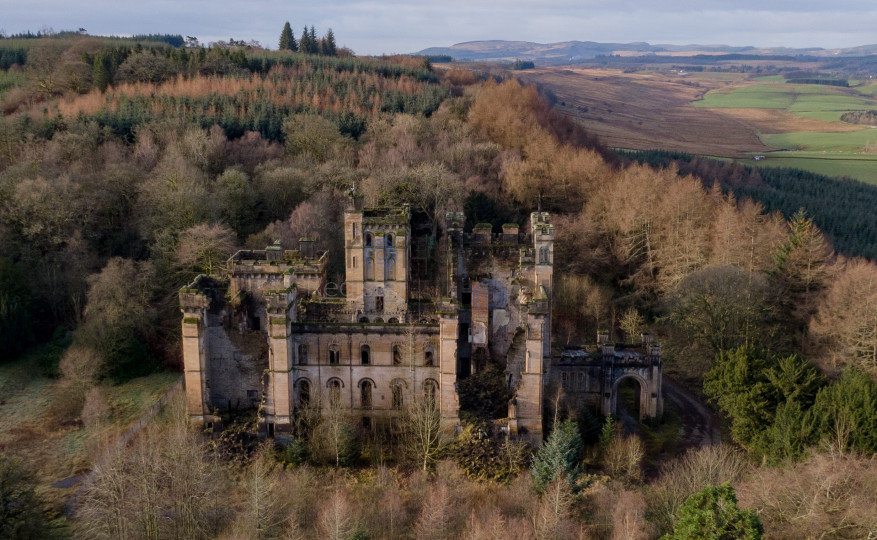Hidden deep in the woods lies what’s left of Lennox Castle Hospital, a place marked by a haunting fire that only adds to its eerie charm. If you’re someone who loves exploring off-the-beaten-path spots, you won’t want to miss a trip to these ghostly ruins.
It’s been more than twenty years since Lennox Castle was abandoned, ending its days as Scotland’s biggest institution for people with learning disabilities. Its troubled history, filled with stories of neglect and abuse, still hangs heavy in people’s minds. Once a place where those with autism and other learning disabilities endured unimaginable suffering under the watch of local authorities, Lennox Castle now stands as a chilling reminder of a darker time, drawing comparisons to the spooky settings of horror movies or places sought out by those fascinated with dark tourism.
.jpg/:/cr=t:0%25,l:0%25,w:100%25,h:100%25/rs=w:1280)
Lennox Castle Hospital is located in Lennoxtown, about 19 km north of Glasgow. Designed by architect David Hamilton, this grand three-story building was finished in 1837, boasting a unique neo-Norman style that makes it look more like a castle than a medical facility.
Originally planned as a residence, Lennox Castle temporarily served as a military hospital during World War I. Its success in this role caught the attention of Glasgow City Council, leading to its transformation into a psychiatric hospital in 1925. The council acquired the estate for £25,000 and poured over £1 million into renovations and new facilities, turning it into a cutting-edge medical institution.
The hospital complex featured forty extra accommodations for staff, as well as kitchens, workshops, and even a tearoom for visitors. Unfortunately, many of these additional structures have vanished over time, leaving little behind today. Interestingly, during World War II, certain hospital wards were converted for maternity purposes, and it was in one of these wards that singer Lulu was born in 1948.



In the 1950s, due to overcrowding, the hospital had to relocate its maternity services, and by the 1960s, it shifted back to exclusively serving individuals with mental illnesses. As the years went on, particularly in the 1970s, the hospital faced major challenges. It exceeded its capacity of 1,700 patients and grappled with staffing and financial issues.
Alasdair Sim, who served as the hospital director in the 1980s, described the situation as dire, expressing deep concern for the impoverished patients. Shockingly, a quarter of the patients at Lennox Castle Hospital were undernourished or malnourished, and punishments ranged from dietary restrictions to physical abuse with baseball bats.
Starting in 1987, patients and staff began moving to nearby hospitals, leading to the eventual closure of Lennox Castle Hospital in 2002. By 2004, all buildings except the castle were demolished. Despite being listed as a building at risk since 1992, the castle continued to deteriorate, and a devastating fire in 2008 reduced it to just the stone shell of the structure.



Even with local organizations’ efforts to preserve Lennox Castle after its addition to the list of endangered buildings in 2002 following the hospital’s closure, the tragic Lennox Castle fire eventually engulfed the entire structure.
The fire started in the early evening in East Dunbartonshire, drawing the attention of bystanders. Thirty firefighters worked tirelessly throughout the night to combat the blaze. Unfortunately, a significant portion of the tower of this 19th-century landmark was destroyed in the fire, leaving the rest of the structure in a sorrowful state, filled with debris and dangerous remnants.

